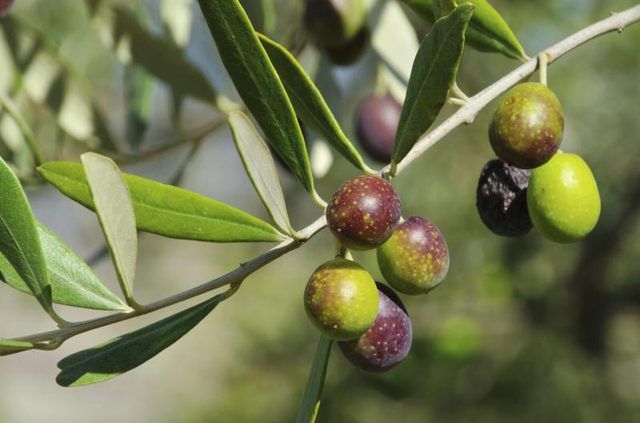Bulbs
Flower Basics
Flower Beds & Specialty Gardens
Flower Garden
Garden Furniture
Garden Gnomes
Garden Seeds
Garden Sheds
Garden Statues
Garden Tools & Supplies
Gardening Basics
Green & Organic
Groundcovers & Vines
Growing Annuals
Growing Basil
Growing Beans
Growing Berries
Growing Blueberries
Growing Cactus
Growing Corn
Growing Cotton
Growing Edibles
Growing Flowers
Growing Garlic
Growing Grapes
Growing Grass
Growing Herbs
Growing Jasmine
Growing Mint
Growing Mushrooms
Orchids
Growing Peanuts
Growing Perennials
Growing Plants
Growing Rosemary
Growing Roses
Growing Strawberries
Growing Sunflowers
Growing Thyme
Growing Tomatoes
Growing Tulips
Growing Vegetables
Herb Basics
Herb Garden
Indoor Growing
Landscaping Basics
Landscaping Patios
Landscaping Plants
Landscaping Shrubs
Landscaping Trees
Landscaping Walks & Pathways
Lawn Basics
Lawn Maintenance
Lawn Mowers
Lawn Ornaments
Lawn Planting
Lawn Tools
Outdoor Growing
Overall Landscape Planning
Pests, Weeds & Problems
Plant Basics
Rock Garden
Rose Garden
Shrubs
Soil
Specialty Gardens
Trees
Vegetable Garden
Yard Maintenance
How Long Does It Take for an Olive Tree to Produce Fruit?
How Long Does It Take for an Olive Tree to Produce Fruit?. Grown for centuries around the Mediterranean area, olive trees (Olea europaea) furnish food, oil and wood. Mentioned many times in the Bible, the olive was an essential crop. Numerous varieties exist, producing different fruit sizes, flavors and shapes, and different flavors of olive oil....

Grown for centuries around the Mediterranean area, olive trees (Olea europaea) furnish food, oil and wood. Mentioned many times in the Bible, the olive was an essential crop. Numerous varieties exist, producing different fruit sizes, flavors and shapes, and different flavors of olive oil. Olive trees must reach about five years old for first fruiting, but variation exists depending on the cultivar, the care given the tree and whether the tree came from seed or cuttings.
Classic Olive Trees
When grown in the traditional open-grove way, olives begin bearing fruit in the tree's fifth year and have full fruit production in seven to eight years after planting. The slow-growing trees take 65 to 80 years to reach stable yields. Production then begins to lessen progressively for the rest of the life of the tree. The trees can produce fruit for hundreds of years. Traditionally, olive groves are handed down from father to son. One ancient tree in the French Riviera is estimated to be about 2,200 years old. Olive is hardy in U.S. Department of Agriculture plant hardiness zones 8 through 10.
Olive Varieties
Speed things along by choosing the right cultivar. Olea europaea "Rubra" not only can begin producing fruit in its second year, but it also bears prolifically and is a relatively early ripener. "Koroneiki" and "Arbequina" begin fruiting early, at about three years old, compared with other varieties that take five to 12 years to reach bearing. "Koroneiki" is the primary variety grown in Greece for oil production. "Arbequina" is commonly used with newer agricultural methods for high-density planting for olive orchards. All three cultivars are hardy in USDA zones 8 through 10.
Effects of Pruning
Although it's exciting to see olives forming on your young tree, keep in mind that in order to have abundant yields in the future, yearly pruning is necessary. It also helps prevent the problem of alternate bearing, where trees bear heavily one year and lightly the next year. Cut the young tree back when it is about 3 feet tall so it contains only three to five scaffold branches. Time the pruning between fall harvest and spring flowering. Look for fruit on the previous year's wood where the leaves attach to the branch. Fruit is never produced twice in the same place.
Cultural Conditions
Stated bearing times assume that the olive has been properly cared for. If young trees lack water, bearing time is slowed, or trees might not fruit at all. Olive trees in containers are particularly vulnerable to drying out. They prefer moist but not soggy soil. Although olive is drought-tolerant and can withstand extended droughts once established, trees need to be kept watered for abundant fruit production. Store container trees overwintered indoors in cool temperatures between 40 to 50 degrees Fahrenheit. If you wish them to flower, they need at least two months of temperatures below 50 F. If trees aren't bearing fruit at the expected time, ensure there is a pollinator nearby of a cultivar different from the one you have. Olives need cross-pollination to bear fruit.